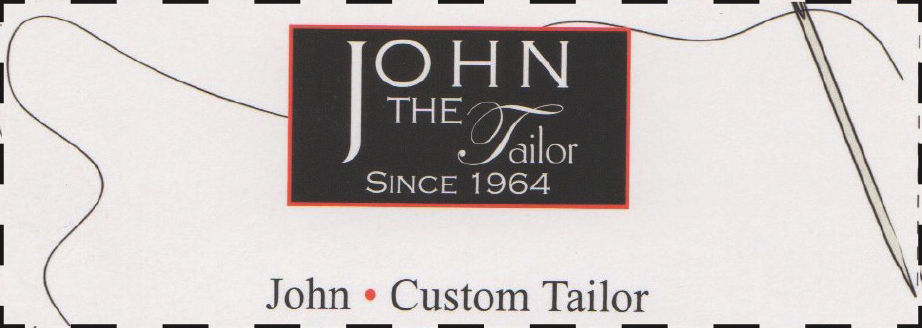
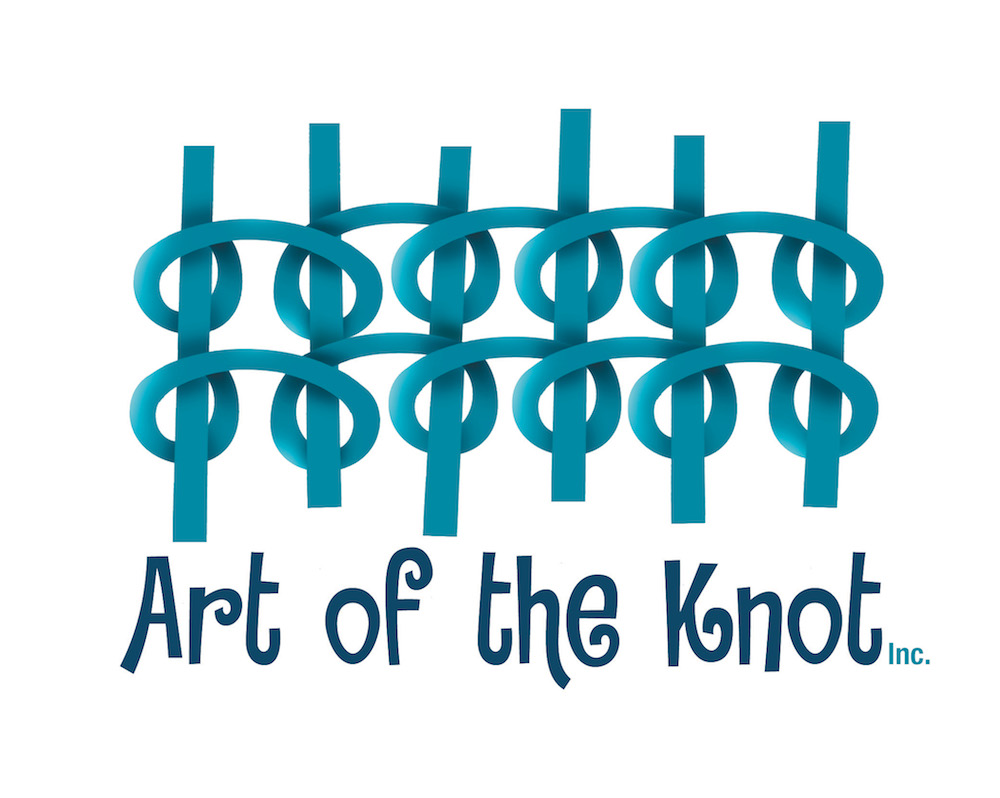
Milestones are being celebrated by two mainstay businesses associated with quality, tradition, and outstanding service. Both John Khoury of John the Tailor and Bahman Amini of Art of the Knot are celebrating 40 years and 25 years respectively in their businesses. Each is engaged in historical and traditional professions that add a large measure of beauty and elegance to our world: Khoury is a tailor and Amini is both a buyer and seller of fine carpets.
Tailoring likely had its roots in linen armorers who carefully fit men with padded linen garments to protect their bodies from uncomfortable chain mail and/or armor, as early as 1100 AD. Through the centuries, tailoring was a skill that required years of apprenticeship. A tailor must understand how to create a three-dimensional garment for bodies that are asymmetrical and variously shaped. Principally a male-dominated art form, tailors must know how to choose the appropriate fabric, measure the client, cut patterns based on those measurements and to sew. A fine suit that fits the client perfectly is a work of art. But it is something of a dying art due to the dominant ready-to-wear clothing industry worldwide.
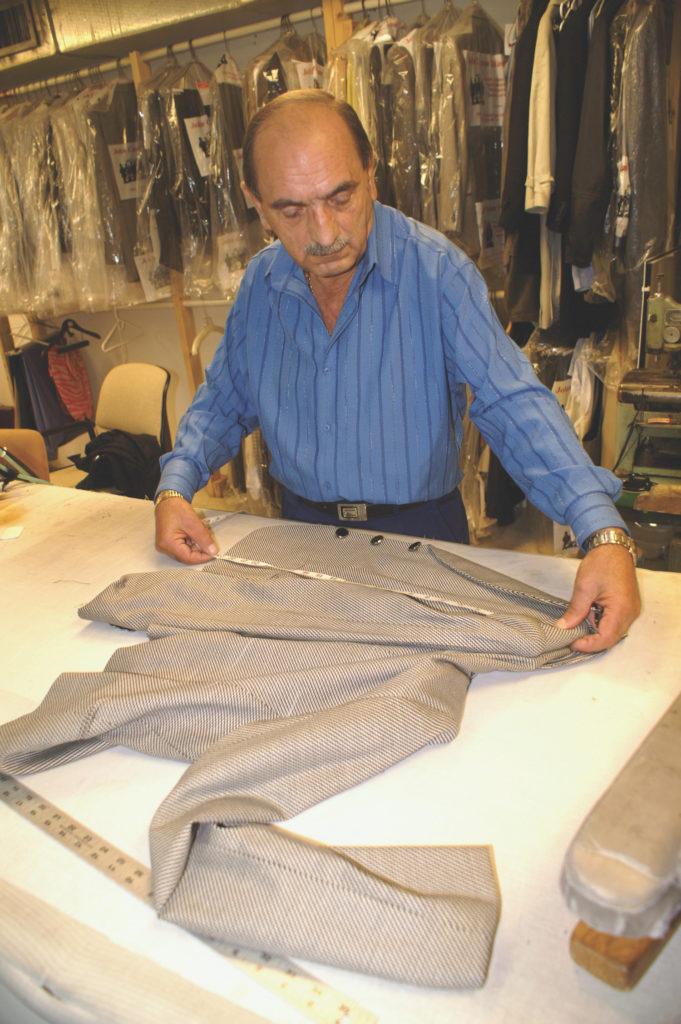
For John Khoury, tailoring has been his life’s work. He apprenticed in his uncle’s shop in Lebanon and made his first suit when he was 13. John left worn-torn Beirut in the 1970s, finally settling first in the Miami area. His considerable skills as a tailor got him noticed rather quickly with the result that Johnny Carson became one of his customers. This was a pattern repeated many times in John’s career–celebrities could always be counted among his loyal customers. In the South Miami shop John has catered to many sports stars including Ray Allen, Alonzo Mourning and a host of other Heat notables. Tailoring slacks for a man who reaches 6 feet 10 inches in height is quite the undertaking—a task that John considers to be just part of the job.
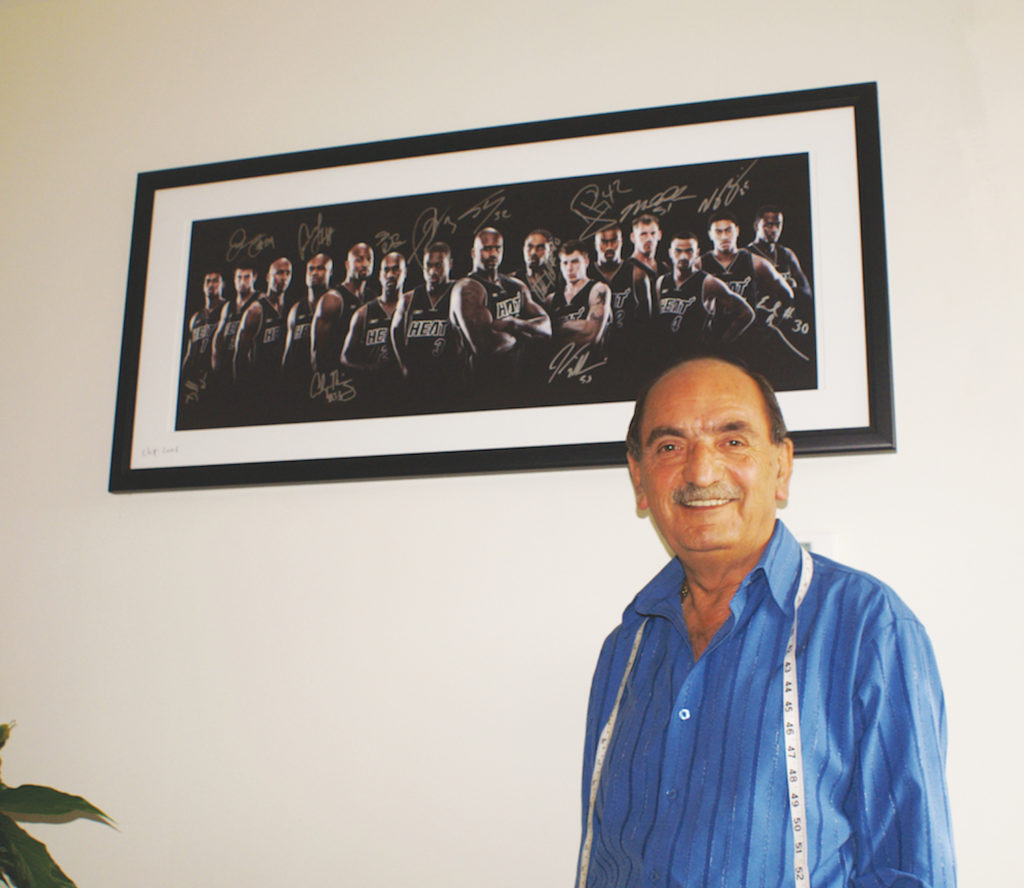
Like many local business owners, John has felt the impact of the pandemic on his customer base. Yet, in his over 40 years as a tailor in the U.S., he says that he has never had an unhappy customer. He declares his life to be good. He and his wife Layla Khoury have been married for 48 years and have three children and three grandchildren. “I could retire, but what would I do with myself. Tailoring is all I know,” said John.
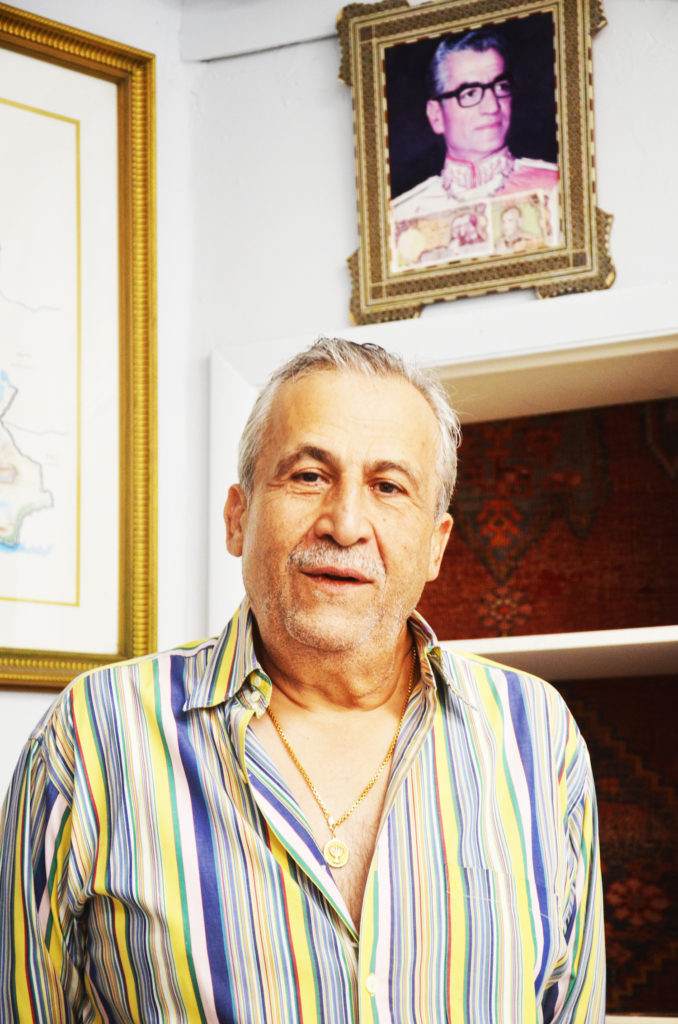
Bahman Amini of the Art of the Knot is originally from Iran. He arrived in the U.S. in 1979 during the Iranian Revolution that saw the replacement of Shah Mohammad Reza Pahlavi’s government by an Islamic republic under Ayatollah Ruhollah Khomeini. “It was time to leave,” said Amini, whose father was the Shah’s dentist.
Initially, working as a curator of fine Persian carpets in the Miami area, Amini was involved with buying and selling carpets to Central and South America (something that he continues to do). Later in his career, he began selling fine carpets from Turkey to China and from parts of the former USSR to Pakistan. He has been in the South Miami location for 25 years and has a loyal customer base that includes second and third generations of his original clients.
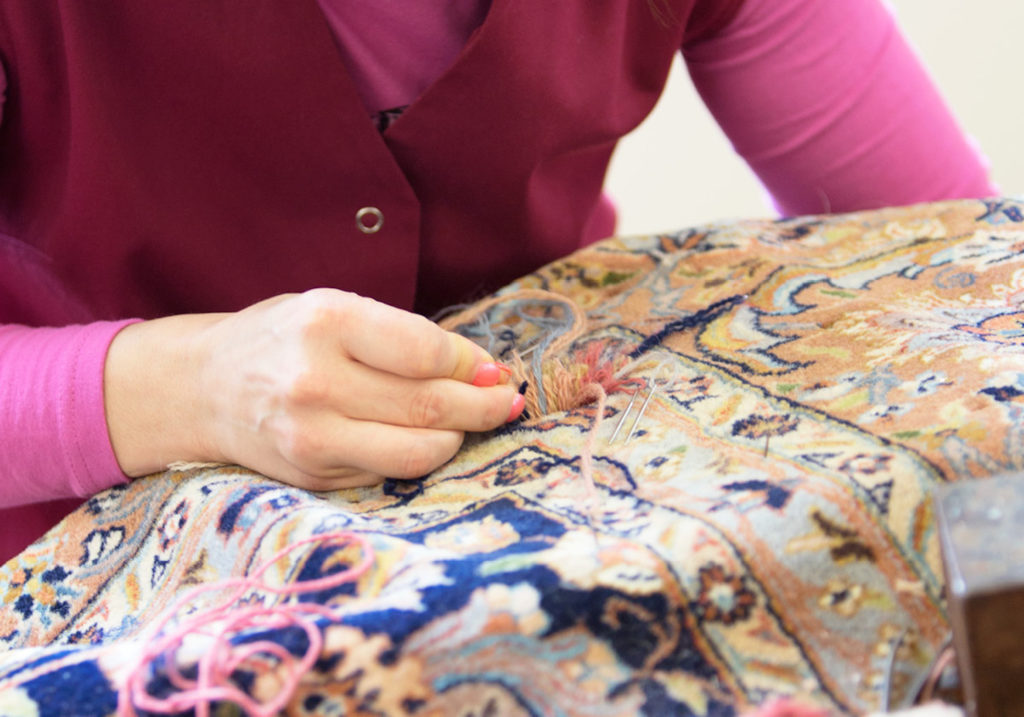
The art of carpet weaving in Iran dates to over 2,500 years ago as a floor covering for nomadic tribes. Over time the practice led to goods that were traded internationally and made with both traditional and new patterns. A mainstay of Iranian culture, the rugs were passed down from generation to generation, as were the weaving and knotting techniques. Bahman Amini explained that much of the rug industry in Iran was promoted and protected by the Shah. That level of concern for this ancient art form was not the focus of the new Iranian government. Other countries that made what are all termed “Oriental” rugs were then able to take the lead over Iran. The Oriental rug trade includes both Persian and traditional local types of hand-woven rugs.
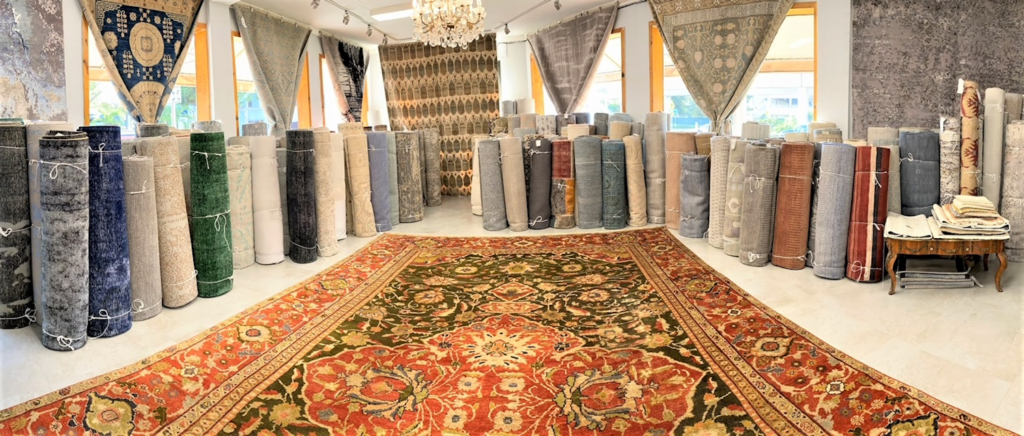
The Art of the Knot at Sunset Rugs and Antiques sells and buys antique and modern Oriental carpets and offers cleaning and expert restoration services. The rugs are treated by the traditional method of washing by hand and drying in the sun. Any and all repairs can be made, even replacing missing knots in the carpet. Amini’s advice is to have your Oriental carpet professionally washed every three to five years to protect the fibers and keep them soft.
“A fine carpet is something you live with all your life. You see it every day, your kids play on it, and your family gathers around it,” said Amini.
– Donna Shelley

John the Tailor:
5609 SW 73 St. Miami, 33143, 305.667.8768
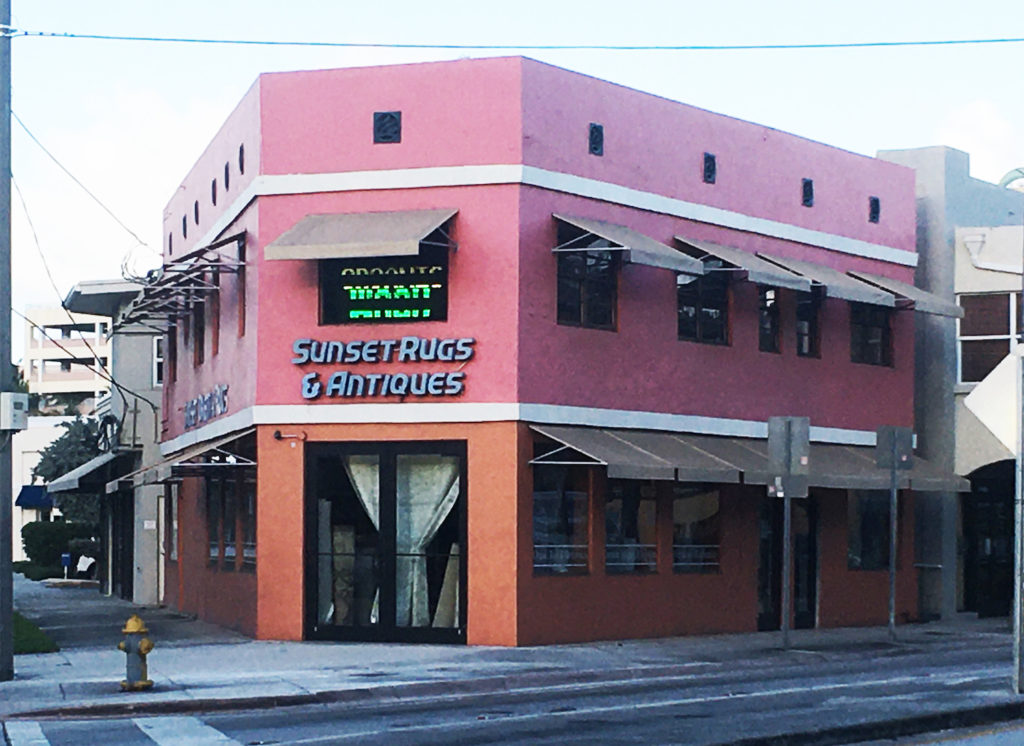
Art of the Knot, Sunset Rug Company:
5893 Sunset Dr., South Miami, 33143, 305.444.4445 www.SunsetRug.com



